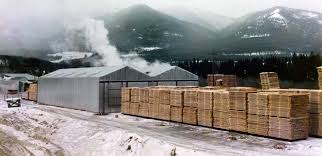Aside from mushroom and truffles,fungi tend to get a bad rap. Generally speaking, we go to great lengths to keep any kind of fungus out of our lives. Woodworkers on the other hand not only welcome fungi but sometimes even try to produce it themselves! Enter spalting-a technique that will change your mind about fungi, at least as far as woodworking is concerned.

Spalting is any kind of organic coloration or pattern from a fungus occurring in wood. It occurs in the decaying process between when a piece of wood is completely solid to when it is completely rotten. Somewhere in the middle of these two extremes, a magnificent beauty is found in spalted wood. It can occur in an isolated area of the wood or the whole piece. This depends on when the wood was stabilized. Fungal spores which form colonies then invade the wood. Unlike the greens which can occur in Cocobolo as the result of sap seeping into a piece or any kind of stained wood (which we would never sell), spalting strictly refers to any color or patters which results from a fungus. The result of a spalted wood is unlike any other grain or hue seen in trees and spalting is highly prized by serious woodworkers. It produces waves of abstract colors and patterns making pastel pinks, grayish-greens and vivid black ribbons or “zone lines”. An internal battle-zone lines can be dark black or a faded edge depending on the tree. In some case of double lines and bright grays can be produces from invading spores. The hue and shape varies from tree to tree and can even change on the same piece of wood.

Spalting can occur in any dead tree which is deliberately or naturally kept moist. In nature this process happens when a tree falls and the conditions are just right. But some ambitious craftsmen induce fungus in wood to produce this unusual result. All wood species spalt differently, it is a process that requires much diligence and knowledge as it can take up to twelve weeks. An understanding of the delicate balance of moisture to wood is required otherwise the piece could completely disintegrate. The results are always unpredictable and never uniform in a piece of wood. Some general rules of spalting include these priciples: 50-85 degrees, at least 30% moisture content in wood and an enclosed, dark, damp place for your wood to rest. Spalting pieces need to be stabilized (usually with a kiln) in order to prevent them from falling apart and to stop the spalting.
Imperium uses hard Maple because the light hue of the tree allows the colors and patterns of the salting to be viewed more easily. The soft colors are brought out and the dark lines make a stark contrast. Also, the abundance of sap in Maple makes for excellent host food which the mold pores attach themselves to. Each spalted razor is unique, safe, and offers a connection to an intense, beautiful, and deep natural secret most people will never know.


Yes! spalting is so beautiful! my dad, grandpa, and great-grandpa were all wood workers (and also some way-back ancestors). I’ve never heard of purposfully induced fungi/spalting, sounds like quite an art. So fascinating! thank you!
LikeLiked by 1 person
Yes it’s amazing
LikeLike
I enjoy learning and this article taught me something new. Thank you.
LikeLiked by 1 person
I found that fascinating, I have seen some beautiful Ukuleles with spalt tops that I would love and wondered about the technique. Your razor is amazing.
LikeLiked by 1 person
Thank you!
LikeLike